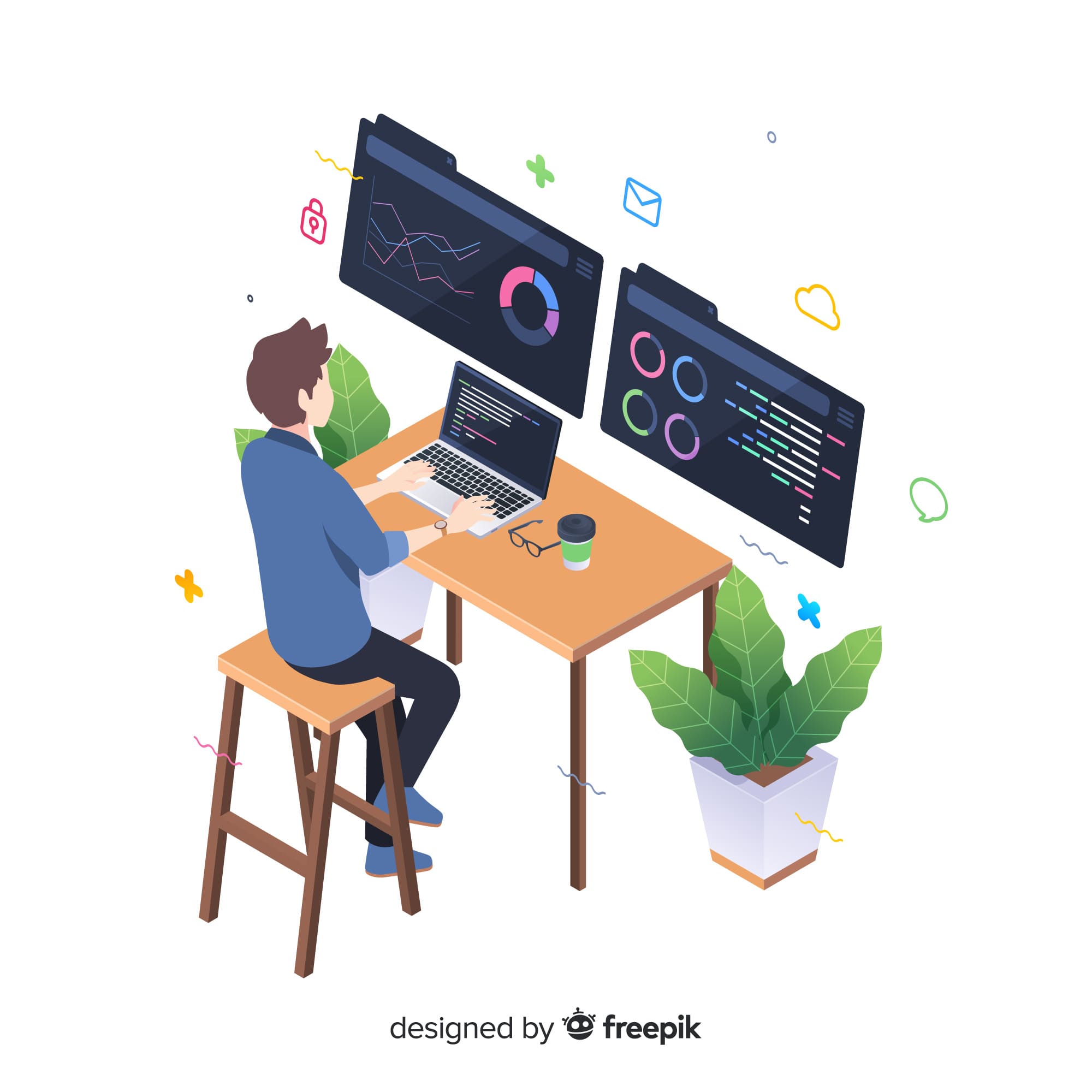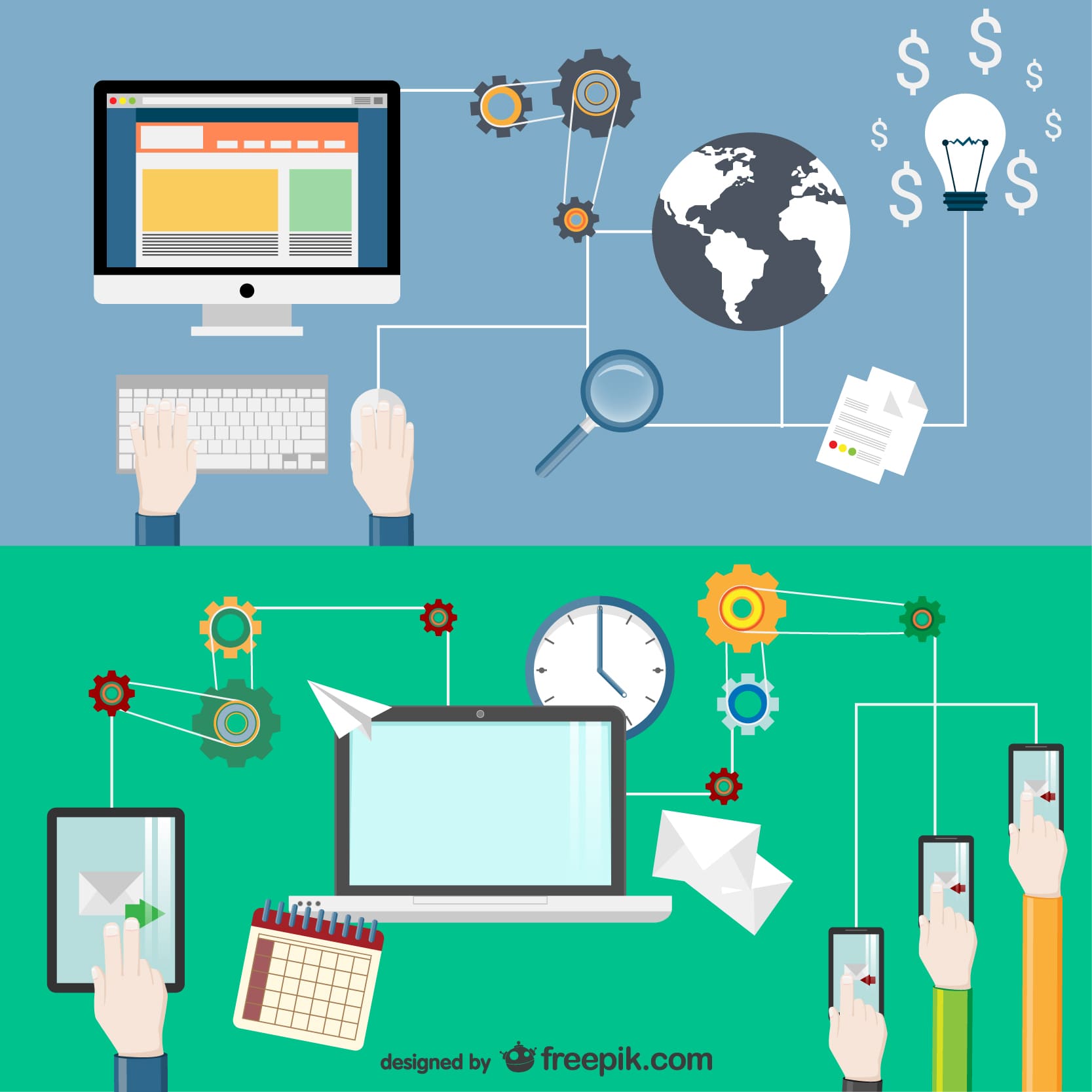
What is Big Data?
What is E-Commerce?
Electronic commerce (eCommerce) is a business strategy that allows consumers and businesses to buy and sell goods and services over the internet. An E-commerce platform can be done on computers, tablets, smartphones, and other intelligent devices. It operates in four key market categories.
Some ways of using Big Data in E-Commerce.
• It can predict trends. Every online merchant wants to be the first to know about the following best-selling product, and there are few better ways than analyzing big data to forecast trends. Online merchants can eliminate the guesswork when guessing what's making a stir online by adopting trend forecasting software.
• It can optimize the pricing. Many organizations rely on comparative pricing with competitors and benchmarking the value of their product or service to develop the optimal price strategy before the explosion of big data and novel pricing systems.
The problem with the manual method is that it gets unmanageable for larger eCommerce enterprises with thousands of items in store. The perfect scenario would be for each product's strategy, and big data makes this possible.
• Helps in ForeCast demand Almost every company does some demand forecasting. For example, if you're a restaurant owner, you'll need to anticipate how many clients you'll have tomorrow and what meals they'll order, so you know what ingredients to buy and how many cooks to hire.
• Helps to create personalized stores. Personalization has been proven to enhance conversions, and few would dispute the evidence. For years, Amazon's customer-centricity has blown the e-Commerce industry away, and many businesses are now turning to big data to mimic such personalized experiences.
• Helps to generate more sales Any e-Commerce business can benefit from big data in terms of increasing sales. With billions of dollars lost due to cart abandonment, Big Data analytics may be used to provide a consumer experience that can't be overlooked.
• Helps to optimize customer service Excellent customer service is critical for client satisfaction and retention in the retail industry. Implementing a well-defined customer care plan must be an afterthought any longer. Businesses can use Big Data technology to improve their customer service and provide a better client experience.
Benefits of using big data in e-commerce.
• You can make better strategic decisions using big data. Big Data insights help business owners make better strategic decisions by understanding what motivates customers and what they want to see in their buy items. You may then tailor your business to the demands and needs of your customers.
• Big data helps to reduce costs. It can help establish more efficient and cost-effective selling methods by using big data to understand your clients better.
• Big Data helps to improve customer service. It can be more effective in keeping your consumers pleased and building more personal and lasting connections with Big Data insights. Big data, in essence, equals improved customer retention rates.
Resource:
https://learn.g2.com/big-data-ecommerce
https://dg1.com/blog/how-big-data-benefits-e-commerce
https://www.linnworks.com/blog/ways-to-use-big-data-in-ecommerce-infographic
Disclaimer: Wherever any material is quoted as sourced from the published text with publishing rights vested in an individual, it is stated that it is a pure quotation and no intention to claim it as our own.
Image Source: www.freepik.com
142 adminDecember 27, 2021

Top 5 Questions to Ask When Choosing a Programming Partner
While there are some obvious questions related to services, rates, and contracts, more nuanced questions are critical. The answers to the following questions will help inspire thoughts on how to evaluate your future programming partner.
1. What Can You Tell Me About Your Company and Team?
The first questions you should be asking a potential programming partner shed light on their background and expertise. Asking for more information about the company itself illuminates their values, and ultimately helps you decide whether there is strong alignment.
Listen for information on how long they've been in business, the size of their team, their preparedness to take on projects of your size. The answers to these questions will help you determine whether they have the proper team in place. Do they have enough developers, UX/UI designers, and project managers to properly execute on your project?. You can also get a sense of their awards, certifications, and client list. All of these pieces will help provide confidence in their preparedness to execute.
2. How Will We Communicate, and When?
Communication is critical to any partnership. When selecting a programming partner, you want to be sure that there is always an open channel of communication and collaboration is transparent. Questioning communication protocols ensures that this is something the partner also prioritizes so that you can rely on them to identify and resolve issues through a highly collaborative process.
It is important to listen for granular details, including the who, when and how. What format will your updates come to you in? What will be the timing of updates? What tools will you be using for communication? And perhaps most importantly, who will be your primary point of contact? If these questions are answered confidently, then you can breathe easy knowing that communication should be handled properly.
3. What is My Involvement Day-to-Day?
Your desired level of involvement is something that you need to have an understanding of before entering into a partnership. Is this something that you want to be involved with every day, or will you be more hands off? Typically, it only makes sense for you to be heavily involved if you come to the table with experience managing a software development team. Those without experience risk the quality of the outcome.
Time management is also a major concern here, because if you don’t have the bandwidth, your programming partner will need to fully understand your vision and goals. It is important that you do everything in your power to help your partner with feedback and achievable deliverables throughout the process. The success of projects often falls on this issue, so make sure that you can trust your partner with the degree of involvement that you are capable of providing.
4. Where are We Vulnerable to Failure, and How Can it be Prevented?
The answers to questions around potential failure tell an important story. What you are fishing for here are clear strategies to navigate bumps in the road. How resilient and resourceful is this potential partner? While failure is not something that anyone is hoping for, it’s important to think critically about the partnership and take a hard look at how a nimble your partner can be.
You want to hear your partner openly consider ways that your project can fail. This demonstrates that they are thinking about all possible scenarios, which will keep them prepared should something unfortunate arise. If they cannot share information about the potential for failure, they might not be as hardened or experienced as you’d like. This can be a major red flag, as some programming partners are not transparent when issues arise, ultimately damaging the potential of a project.
5. How Can You Ensure Consistent and Quality Deliverables?
Promising a great result is much easier than delivering one, which is why this question is so important. In order to gain confidence on a partner’s ability to deliver, businesses should gain an understanding of their benchmarks and metrics that gauge success.
There are many considerations here, starting with quality assurance measures focused on code. Strong methodology around development, deployment, and evaluation can help ensure the code produced is of a certain quality. The development workflow is also an important element here, so having best practices and standards explained can be insightful.
You want to listen for confidence around all processes and metrics for success, as to ensure that your project will be managed properly from start to finish. It is also important to establish whether or not continued support will be required in the future as your business scales and evolves.
Disclaimer:
Wherever any material is quoted as sourced from the published text with publishing rights vested in an individual, it is stated that it is a pure quotation and no intention to claim it as our own.
As a programming partner ourselves, we’ve successfully completed over 700 projects for our clients over the last 12 years. A number of these clients have gone on to become successful VC funded ventures. If you’d like to learn more about our unique approach to programming, click here.
Image Source: www.freepik.com
145 adminJuly 9, 2021
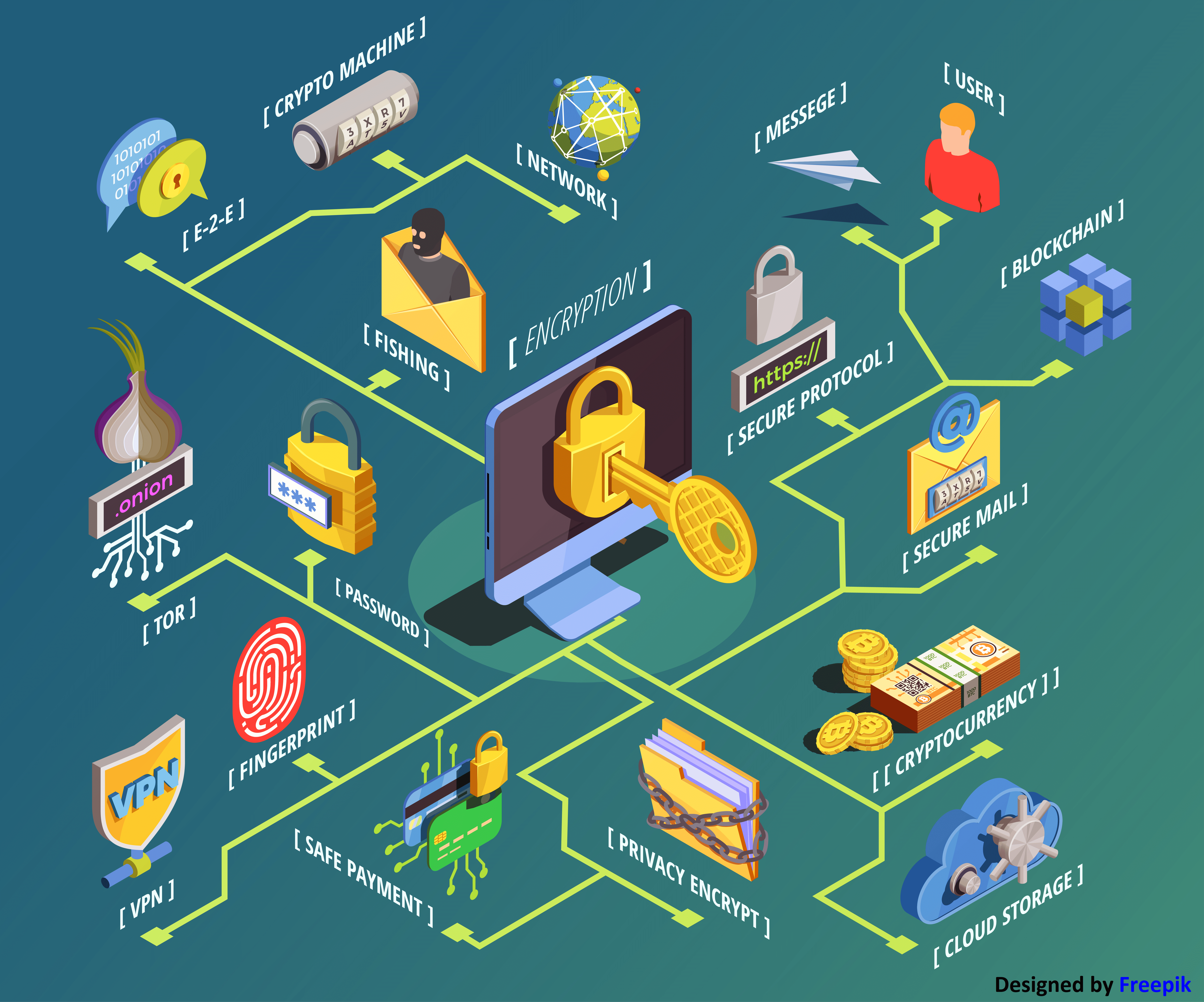
4 Ways to Protect Your Customer’s Data
Considering that hacks are on the rise, and security incidents are not uncommon, it’s important that your company continues to explore methods to shield your customer’s data from malicious actors. Here are four tips when it comes to protecting your customer’s data.
1. Choose the Right Tools
Businesses are collaborating and sharing information with team members, vendors, and various partners on a daily basis. This is a necessity for businesses with remote staff members, which have increased since the onset of the COVID-19 pandemic.
In order to safeguard against this as a security flaw, companies must choose collaboration and communication tools that are secure. When choosing a cloud storage provider or deploying project management tools, companies should be prioritizing security.
Any digital tool that allows employees or clients to access documents or request information from databases should be analyzed for potential risk. A major component here is also the training around these tools. When team members understand the technology you’re using, the company as a whole is better protected.
2. Replacing FTP Scripts
There are many organizations that are still exchanging information using custom programs or scripts. Being that this methodology is now considered outdated, this process presents a security risk.
The architecture of FTP scripts is typically very vulnerable, and offers limited control of data. As a result, they are not accepted by the primary compliance regulations, and their use should be stopped immediately. As a replacement, consider secure FTP solutions that guarantee confidentiality. Using an alternative will improve security while providing total control and traceability of data movements, which ensures compliance with regulations.
3. Locate Compromised Devices
The prowess of modern hackers should not be overlooked, which is why any device with an internet connection should be considered “at risk”. Whether it is a work computer, personal smartphone, or even a connected smart device, hackers are looking to exploit the technology to acquire valuable data from businesses and their customers.
Businesses must remain proactive, and work to locate any compromised devices in your internal network. Additionally, it is important to consider the deployment of solutions that focus on network traffic inspection and threat detection. There are a number of options on the market available, and they provide advice on what is needed in order to avoid the threat of a data breach.
4. Data Encryption
Data that is being stored or shared should always be encrypted, as this ensures its confidentiality. The major benefit being that encrypted data is unreadable should it be accessed by someone without permission. This is why data encryption is so powerful.
File transfer software encrypts data in transit, and rights management solutions help control access to documents and information, despite the location of the data. There are a number of options available when it comes to encryption software. Always make a decision based on your specific needs and the desired outcome.
Disclaimer:
Wherever any material is quoted as sourced from the published text with publishing rights vested in an individual, it is stated that it is a pure quotation and no intention to claim it as our own.
We suggest that businesses look at their vulnerabilities and constantly work to improve their data protection. Avion Technology specializes in assisting throughout this search for improved data security solutions. To learn more about our unique approach to programming, click here
Image Source: www.freepik.com
136 adminJune 28, 2021

6 Project Management Tools for Agencies
Every agency is different and necessitates different solutions. Luckily, there are a myriad of options available, each with its own user interface, user experience, and set of tools. We advise all agencies to consider the following questions before selecting and deploying a project management tool.
- Are you concerned with scalability?
- Do you need a tool with flexibility?
- What features are most important to you?
- How will your clients use the tool?
- What integrations are required?
- Do you have a training process?
- What is your goal for the tool?
Approaching the decision-making process with the right questions in mind will ensure that you choose the tool that is best for you and your team. Being that there are so many options on the market, we want to take a little time to look at the top six tools. If any of these tools seem helpful, we implore you to do some more research and really dig into the features and reviews of each option.
Basecamp
Basecamp has solidified itself as one of the most common choices among agencies that seek a simple management and communication tool. It allows for users to assign tasks to individuals or groups, discuss projects on message boards, generate reports for a team’s capacity, and provide an outward facing screen for clients.
Asana
Asana, like most project management tools, allows for teams to manage projects, store files, and collaborate on the platform. Project planning is fairly simple, allowing for instructions to be added, deadlines to be set, and assignments to be made. Asana’s visual kanban option makes it easy for tasks to be moved from stage to stage, as Asana’s visual elements bring clarity to project tracking.
Features include the assignment of users to tasks, communication organized by task (outside of email), customizable calendars, customizable fields for team members to capture information and track status.
Teamwork
This project management tool was built for both in-house and remote agency teams. It has become known for its ability to simplify collaboration through customizable workflows and easy to use project templates. Many cherish this tool for how intuitive it is for users when it comes to visualizing deliverables and creating lists of tasks.
Features include, customizable templates, task tracking, visualized milestones, real-time status updates, and in-app communication.
Trello
Many people consider Trello a combination of a digital whiteboard and pinboard. Users can create tasks that are pinned to custom “boards”, which can then be worked on individually or as a group. The tasks can be commented on, shared, assigned, and attachments can be added. Boards can then be placed in different areas so that projects are transparent and team members are accountable for their deadlines.
Features include, creation of custom boards and tasks, checklists within tasks, task assignments with attachments and deadlines, commenting on tasks, and the creation of public or private links for shareability.
ProofHub
When an organization like NASA is using your project management tool...it must be effective. Proofhub combines many features and aims to eliminate the need for too many tools within your business. It allows for project planning, collaboration, organization, and makes it easier to deliver projects on time.
Features include, online proofing to cut back on feedback time, de-stressing the task management process, Gantt chart visualizations, and an effective mobile app for both Android and iOS users.
Scoro
Scoro has built a name for itself around how comprehensive of a tool it is. It is being deployed by both professional and creative services companies in order to bring structure to workflows. This goes beyond project management and into a business management solution, which includes tools for automated quoting and billing.
Features include, one platform for team members and clients, seamless workflows that organize all silos within a business, real-time overviews and reports, and integrations with platforms such as Outlook, Mailchimp, Dropbox, and more.
In Conclusion
As a programming partner, we understand the monumental importance of strong project management. The tools that you choose will help provide a structure that can elevate your operations. Start by asking yourself the right questions in order to properly gauge your organization’s needs. The answers to these questions will set you on the path to uncover the project management tool that is best for your agency.
Disclaimer:
Wherever any material is quoted as sourced from the published text with publishing rights vested in an individual, it is stated that it is a pure quotation and no intention to claim it as our own.
We’ve successfully completed over 700 projects for our clients over the last 12 years. A number of these clients have gone on to become successful VC funded ventures. If you’d like to learn more about our unique approach to programming, click here.
Image Source: www.freepik.com
144 adminJune 22, 2021

Top 5 Programming Trends in 2021 So Far
Now that we’re a quarter of the way through 2021, a clear set of trends has emerged within programming. The rest of the year has a lot in store from a technology perspective and web development is a huge part of that. When it comes to building your new web project this year, you should pay close attention to the following five trends.
- The Rise of Apache Spark
- Native App Development
- The Triad of Kotlin, Scala, and Java
- Keep an Eye on Distributed SQL
- The Omnipresence of Cloud Technology
The computation of large-scale datasets was once ruled by Hadoop Map-Reduce. However, a new frontrunner has arisen over the last few years, and it goes by the name of Apache Spark. Many programmers and agencies felt restricted by the limitations of Hadoop Map-Reduce, as it processes data in the memory as opposed to storing it post-operation.
Apache Spark presents an opportunity for cost savings and improved performance when compared to the other options on the market. It processes everything in memory and we predict that it will become the most common batch processing framework by the end of the year.
Programs that are developed to run on specific machines are known as native apps, and these are becoming much more sought after. The primary use for these builds is to run on smartphones. Being that Android and iOS are the two main operating systems, native apps are mostly built exclusively for these two platforms.
Businesses are increasing their investments in native apps because of the significant improvements they offer to performance and user experience. While cross-platform tools like React Native and Flutter exist and offer a more rapid development timeline, app development companies will still drive major revenue through native app development in 2021 and beyond.
The rise and domination of Java since its inception in 1991 is nothing to scoff at. Java programming is positioned to continue its influence within the industry, as Java runtime and Java Virtual Machine offer a powerful infrastructure for common programming languages such as Java, Kotlin, and Scala.
The nature of software licenses is always changing, and recently Oracle altered the license for JVM. This means that every company that uses Java, Kotlin, and Scala is now required to pay significant subscription fees. Despite this change, these three languages will continue to dominate in 2021.
Databases have become a critical element within the software industry, to the degree that the world needs them to run. SQL has cemented itself at the top of the popular databases list because it provides durable ACID transactional guarantees. These are necessary when it comes to running business applications.
Despite the expectation of continued prominence within the space, many companies are actively seeking a solution that allows for the retention of the ACID guarantee while parting ways with SQL databases. The two solutions that are successfully fulfilling this need are Amazon’s Aurora and Google’s Spanner. The issue is that both of these offerings lack SQL features that are still desired. Whoever steps in and fills this role will likely dominate this space beyond 2021.
The proliferation of cloud technology has made it accessible for businesses of all sizes. The degree to which the cloud is being used varies, however, studies reveal that cloud adoption has accelerated across most industries. At this point in 2021, if you aren’t on the cloud, perhaps now is the time to consider it.
Popular cloud vendors such as Amazon, Google, and Microsoft have been doing everything in their power to encourage businesses to migrate to the cloud. Now is the time to take advantage of this technology, and even claim one of Google’s $300 credits for the year.
These five trends will undoubtedly carry us through 2021 and beyond. Trends change yearly, and as technology advances new doors of opportunity open for programmers and agencies that remain at the forefront of the space. We encourage everyone to do their research and remain cognizant of developments as they occur, as this list is by no means comprehensive.
Disclaimer:
Wherever any material is quoted as sourced from the published text with publishing rights vested in an individual, it is stated that it is a pure quotation and no intention to claim it as our own.
Avion Technology is always looking toward the future of programming, and we help businesses with the adoption of new technologies. To learn more about our unique approach to programming, click here
Image Source: www.freepik.com
134 adminApril 27, 2021

The Simplest Way to File a Patent
If you’re an inventor who is serious about delivering your invention to the world, and you want to secure your ability to get rich… you’re going to want to patent that invention.
If you’re not familiar with exactly what a patent is, we recommend that you do some research. But, in essence, a patent is a form of monopoly that is granted by the government for a specific amount of time. This period of time affords the inventor the ability to manufacture, market, and sell their invention. It protects your concept so that no one else can steal it from you for the allotted period of time.
The following eight steps outline the simplest path to patenting an invention…
- Conduct a Search Conduct a search of the United States Patent and Trademark Office (USPTO) for similar ideas. If your idea has already been patented, then it will be a huge waste of your time to try and patent it again. This is fairly common, so do your due diligence and utilize this helpful search engine created by the USPTO. Make sure that your idea is actually something that you can legitimately patent. Find an Attorney A patent attorney will significantly simplify the patent application process. These attorneys bring years of experience to the table, which means they’ve likely seen countless successful and unsuccessful filings. These professionals will help you avoid mistakes and save money in the process.
- Finalize Patent Type There are various types of patents that can be applied for. Do you require a Plant, Design, or Utility patent? For the uninitiated, the USPTO offers this helpful guide. Obviously, the type of patent that you are applying for will alter the process.
- File Your Provisional Application It is important to take a preemptive approach to your filing, as someone might be trying to beat you to the punch. The filing of a provisional patent application protects you from someone jumping in and claiming that they had the idea first. The patent law system prioritizes those who file first and those who invent first. Move quickly and decisively.
- Register as an eFiler The quickest and easiest way to file a patent is online. While it is possible to file a patent application by mail or even fax, the USPTO website simplifies the process. Start by registering as an eFiler and utilizing their resources to inform yourself on the in and outs of the application process.
- Assemble Application Requirements When submitting an application, a specification is required. Preparing this includes an abstract, background, summary, description, a conclusion, ramifications, and a scope. This process also requires that filers define the legal scope of the patent being filed. Being that this is a complex request, it is helpful to employ the expertise of a patent attorney.
- Finalize Your Application The patent application process takes two to three years on average, which makes it so important to be confident in your application. Review all of the gritty details of your application so that you can avoid rejection. Simple mistakes or errors can be resolved during a thorough review process.
- Patent Your Idea Every patent that is filed is assigned a patent examiner. All communication flows through this person, including any formal requests or correspondence. It is important to keep communication channels open with this individual and to respond in a timely manner. If you are quick to respond and receptive to their requests, the process will move faster. Patent attorneys are helpful here as well, as they communicate directly with your patent examiner and the USPTO.
Disclaimer:
Wherever any material is quoted as sourced from the published text with publishing rights vested in an individual, it is stated that it is a pure quotation and no intention to claim it as our own.
Avion Technology has worked with many businesses and entrepreneurs that have been through the patent application process and successfully registered a patent. We help digital agencies with white label programming and a hybrid approach that utilizes both Chicago-based and offshore talent.Learn more
Image Source: www.freepik.com
143 adminApril 20, 2021

Investment Rounds Explained: Seed, Series A, B, & C
Most successful startups actively seek external funding at various stages of their development and growth. Outside investment processes are commonly broken down into specific rounds of funding. These rounds include Seed, Series A, Series B, and Series C. Each round allows for investors to obtain equity or partial ownership of the company in exchange for capital.
A fundamental understanding of each investment round is critical for both company owners and those interested in evaluating entrepreneurial prospects. Each round of funding aims to bring ideas to life, empower entrepreneurs to drive growth, and ultimately sustain a successful business that generates substantial long term revenue.
Let’s take a look at each unique investment round...
SeedThe first official investment round that a business partakes in is called ‘Seed funding”. This initial financial support is meant to assist in the early growth of a business venture. The goal is to fuel revenue generation and strategic initiatives during the infant stages of operations. Often, this funding is allocated by the new business for product development or initial expenses like staffing and market research.
The types of investors that assist with Seed funding vary. Sometimes these investors are the founders themselves or their friends and family. Beyond personal relationships, VC firms, incubators, and Angel investors are common contributors in the Seed round of funding. Angel investors are arguably the most common early investors, and they require equity in the company in exchange for their investment. Being that many of these initial investments contain some degree of risk, equity requests have become common.
The specific amount raised during the Seed round can vary from $7,000 to $2.5 million, as it depends on the startup being considered. While many startups eventually move on to other rounds of funding, some decide that Seed investment is all that they need and never engage in further rounds. On average, companies in the Seed round are valued between $3 - $6 million.
Series ASeries A funding is often sought by businesses that have already proven their ability and demonstrated that they are successful to some degree. This demonstration of success can be in the existence of a strong user base, or consistent revenue over an extended amount of time. The objective of Series A funding is to truly scale products, users, and operations.
One of the primary differences between Seed round and Series A is the existence of a solid business model that will lead to sustainable success and an ability to monetize. While many startups successfully raise Seed money, they struggle to monetize. This round of investment has a significant range, as it is not uncommon for Series A rounds to obtain anywhere from $3 - $20 million. If the business in question is within the tech industry or is considered a ‘unicorn’, then Series A funding can average $15 million.
Investors are looking for much more from businesses at this stage than in the Seed round. While the Seed round is focused on powerful ideas, Series A companies must possess a strategy that positions a strong idea for success. These investors are often working at VC firms, and the process is much more nuanced. VC firms are looking for companies that have already received a single investor at this stage, known as an “anchor”. This first investor helps attract the attention of other competitive investors.
An emerging trend within Series A funding rounds is the presence of equity crowdfunding. This provides an alternative for businesses that are unable to create buzz or interest within the VC space. This is a common issue, as less than 50% of businesses that received Seed funding go on to secure Series A funding. Businesses in the midst of Series A funding can be valued at around $25 million.
Series BWhen a business moves into the Series B round of funding, they are well past the development stage. At this point in operations, investment is meant to expand the market potential and reach of a business, as the user base is already established. In order to obtain Series B funding, a company must demonstrate to investors that it is ready to scale sustainably and successfully.
In order to achieve this scale, businesses often bring in additional talent with a track record for business development. Often these professionals are in sales, tech, or advertising. The cost of acquiring this level of talent is a hefty one, which is why the average Series B raise is $33 million. At this point, the company is established and its valuation is reflective of its success to date (between $30-$60 million).
The investors in this round possess the same professional profile as those in Series A. Often an anchor investor at a VC firm gets the ball rolling and inspires others to invest. The primary difference here is the presence of a few select VC firms that specialize in funding later-stage companies.
Series CEvery business that goes through Series C funding is already a success. Because of this, the funds raised in this round usually go towards product development or the acquisition of new companies. Series C investors are looking to more than double the amount that they inject. The idea is to scale as quickly and smoothly as possible, as the business is already successful to some degree.
Being that rapid scale is often the goal here, acquisition of another company is a common use of funds. Since the primary company is successful, it becomes much more conceivable that the same team would be able to acquire a similar or related company and integrate it. This is especially effective if the company being acquired is a competitor with a slightly different offering or market. This allows the Series C company to immediately expand.
Another common approach is to broaden the target market. If a company is a huge success in America, Series C can help expand operations overseas where a similar approach can be used to scale quickly.
Due to the demonstrated success of companies that make it to Series C, the investment is viewed as much less risky. A less risky investment increases the presence of potential investors. This is why investment banks, hedge funds, and private equity firms all appear during this round. These investors are looking to secure their own positioning as leaders, which is why they are inclined to invest in a company that is already doing very well.
Series C businesses often secure hundreds of millions of dollars in funding, as they are often valued at around $120 million. This valuation is common of companies that are looking towards an IPO, and Series C only increases this valuation. The primary difference in valuation at this stage is the fact that it is based on real data and not expectations for success.
Disclaimer:
Wherever any material is quoted as sourced from the published text with publishing rights vested in an individual, it is stated that it is a pure quotation and no intention to claim it as our own.
Image Source: www.freepik.com
151 adminApril 14, 2021

The Biggest 3 Issues Facing Most Agencies
Running a design or development agency requires an ability to tackle a range of operational issues. Many of these issues stem from client demands, which can range from complex needs to vague ideas that must be deciphered. All client demands vary in certain respects, but each must be considered and navigated in order to achieve success. While your agency brings a lot of experience to the table, development is always challenging and some issues are consistent across the industry.
Avion Technology specializes in the white-labeling of programming for digital agencies, providing a hybrid approach to offshoring that keeps project management in Chicago while delegating certain elements to trusted offshore partners. This approach simplifies web development for all of our partners by solving these 3 common issues facing most agencies today.
- Staffing In-House Programmers
One of the logical solutions to clients regularly requesting complex website development is the hiring of an in-house programmer. At first, this decision makes sense as you consistently need a programmer and you want one that you trust as a dedicated team member.
The clear benefit being that you will now have a developer that is fully onboarded as a team member, and working closely with every other relevant employee on staff. The issue that agencies face when making this hire is that one person cannot cover the range of specialties and skills required to program. The evolution of technology results in new techniques, platforms, and preferences that must be accounted for.
An in-house developer usually does not have the bandwidth to keep up with developing trends, as their focus will need to be on client projects and deliverables. It becomes impractical for agencies to keep up with new software, equipment, and skills that in-house developers must remain cognizant of as the industry evolves. This is why staffing programmers remains a top challenge for most agencies.
- Outsourcing Decisions
As a response to staffing challenges, many agencies decide to outsource some elements of development. This is a very effective solution, however, too many agencies struggle with the decision of who and where to outsource to. The choice commonly exists between freelancers, partner agencies, and overseas companies. Each choice has its pros and cons, but hybrid solutions exist that offer the best of all options.
Coordinating freelancers can be a nightmare. These external professionals must be properly managed so that deadlines are adhered to, ideas are protected, and communication is consistent. There are so many variables here, and changes in availability, so some agencies try to avoid this path. Even more of a concern is when a number of different freelancers get involved and a project becomes unwieldy with inconsistencies and varying code. Outsourcing overseas is an option that many agencies take when looking to scale quickly, as costs can be cut. There are concerns related to language, culture, and work schedule, which some agencies struggle to manage. The complexity of any given project can impact its success and the hurdles that exist.
Agencies like Avion Technology bridge the gap between outsourcing overseas and working with a partner firm or freelancer. We have our own team here in Chicago that handles project management and collaboration with our overseas team and our clients. This eliminates concerns related to overseas outsourcing by providing a local team that manages projects and is available for communication with clients.
- Scaling Your Agency
Scaling any business is difficult, and creative agencies are notoriously challenging to scale. When growth occurs, new people must be hired, services must remain consistent, and business development becomes more complex and financially significant. The ability to scale requires an ability to manage growth so that all processes can be monitored and optimized while maintaining the company culture that helped you achieve success in the first place.
In some cases, an agency was constructed around the founder’s expertise and brand. This sets the groundwork for client expectations, which can be difficult to move beyond. As agencies scale, growth must occur at a deeper level so that the founder isn’t expected to handle every major client interaction. Once scale is achieved, the founder will not be able to have his or her hands in every pot, which makes them a bottleneck should that expectation continue to exist.
Avion Technology is a great resource for agencies that are looking to scale sustainably. We help manage projects, providing a range of pure backend developers that help remove bottlenecks for our clients. We work with our team in Chicago and our team overseas to ensure that clients receive the value associated with outsourcing and the trust associated with a local partner in your city.
Disclaimer:
Wherever any material is quoted as sourced from the published text with publishing rights vested in an individual, it is stated that it is a pure quotation and no intention to claim it as our own.
Whether it scaling, staffing, or outsourcing considerations, the decisions you make have a substantial impact. Avion Technology specializes in assisting throughout these processes. To learn more about our unique approach to programming, click here
Image Source: www.freepik.com
143 adminApril 13, 2021
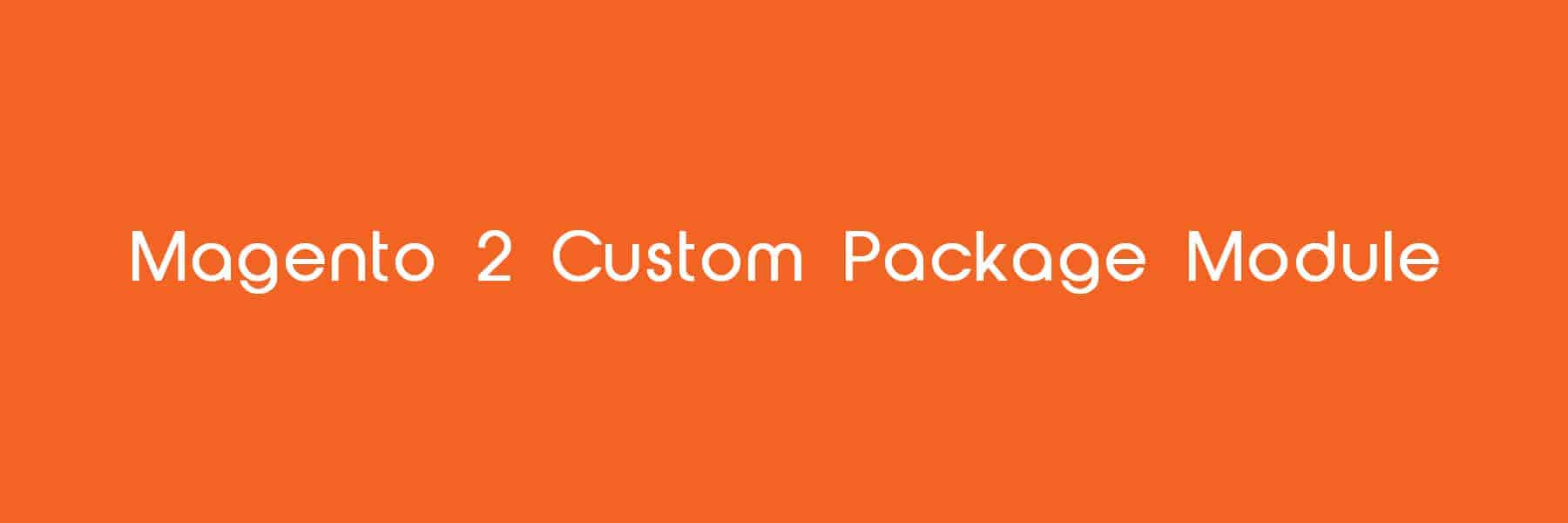
Custom Package Module -Magento 2
How does Custom Product Package Module work?
This is the most crucial feature that we developed for the new version of the site. The new website has more than 45,000 products available for sale online. This is the set of features that allow site visitors to quickly and easily locate individual Product Category 1 and Product Category 2 products, as well as package both category products together to create customized products that they can then purchase at a discount.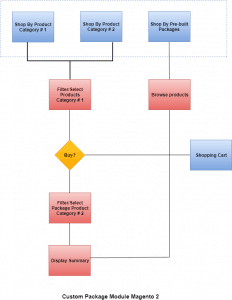
The shopping wizard breaks the product search and selection process down into a Six-step process:
- Choose your shopping path
- Filter Product Category 1 (or Product Category 2) products
- Select Product Category 1 (or Product Category 2) product
- Filter Product Category 2 (or Product Category 1) products
- Display summary
- Add to cart
Step 1 – Choose your shopping path
- At this stage of the process, the site visitor to choose how they want to shop for products. They can opt to start with Product Category 1, or Product Category 2.
- The Product Category 1 and Product Category 2 leads them to further steps within the wizard, while the prebuilt packages option links the user to that category within the product tree.
- In this module, all packages created through the shopping wizard has a default quantity of 4. The user cannot change this value during the package building process.
- At this level, the user can click the appropriate module on the home page to then activate the controls (list of drop-down filters) that allow them to start the buying process.
- The user must make at least one selection from these menus and then click the “Buy” button to continue to the next step.
- The list of options available for each buying path is listed below:
- Product Category 1
- Attributes
- Product Category 2
- Attributes
- Product Category 1
- The specific options available within each of these menus is driven by the individual attributes assigned and configured for each product.
- In this module, the filters presented must be utilized in the order presented. Subsequent selections are disabled until the preceding menu has been used.
Step 2 – Filter/Select product
- The user is presented with a list of products based on the selections that brought them to this step in the process.
- In addition to displaying a list of applicable products, the user also has the opportunity to filter the product list further based on specific criteria for that set of products.
- Users can view the resulting list of products on the same page along with the product details like image, name, brand, and price.
- The attributes are displayed in a series of drop-down menus, including the filters as well as additional options.
- The user can continue to filter the products until they reveal a list that contains a specific product that they are interested in purchasing.
Step 3 – Option to Buy or Continue
- In this step, the user can view the product details of the product for which they have selected. User has an option to continue the buying process. (interested in either Product Category 1, or Product Category 2).
- Various options are displayed depending on the user’s selection such as by Product Category 1, or Product Category 2.
- Instead of showing details for both products in the resulting package, details for just one product are shown (either the initial Product Category 1 or Product Category 2, selection).
- The pricing displayed here is for a set of 4 units (either Product Category 1 or Product Category 2).
- Along with the price, the details for the initial product selection is also displayed in the module.
- Shop by Product Category 1
- Add products from Product Category 2 and get discount
- This option advances the user to the next stage in the shopping wizard, allowing them to add products from Product Category 2 to the product selected from Product Category 1 and build their own “package.”
- Users can filter / select products from Product Category 2 to add to their package.
- Users can also directly buy the products from Product Category 1 by clicking on the “Add to Cart” button.
- Shop by Product Category 2
- Add products from Product Category 1 and get discount
- This option advances the user to the next stage in the shopping wizard, allowing them to add products from the Product Category 1 to the product selected and build their own “package.”
- Users can filter/select products from Product Category 1 to add to their package.
- Users can also directly buy the products from Product Category 2 by clicking on the “Add to Cart” button.
Step 4 – Filter package product
- In this step, the users can filter the available products to add to their package.
- As an example, if the user has selected a product from Product Category 1, the initial list of products displayed to the user is filtered on the size attribute of their product choice.
- The same filters outlined in step 2 above are displayed here, depending on which path the user has chosen.
- Users can also change their selection in this step. They can start from the beginning of the package building process where they can update their initial product selection.
- In this step, the user can also view the list of filters available for the second product.
- The price shown at this step is the total price of the package.
- The user can continue to manipulate the filters until they reveal a list of products that contains the product they want to add to their package. Once they click on a specific product, they are taken to the next step.
Step 5 – Display summary
- Once the user has selected both a Product Category 1 and Product Category 2 for their package, they can view a Package Summary that outlines the product details for all their selections.
- The following information is displayed in this step:
- Package Price
- Product Name
- Product Photo
- Technical Specifications
- Add to Cart
- We have also integrated the Affirm Financing option in the module, which offers multiple financing options to the users.
Step 6 – Shopping cart
- The product added by the user is to be displayed in the shopping cart.
- The price reduction for the packaged product is displayed as a “package discount” line item in the cart.
- The price of the package increases or reduces according to the pricing rules set by the Admin.
Why should you choose Avion?
We have a team of experienced Magento developers who have worked on many Magento projects involving both customizations and migrations. Our team is efficient in handling complex projects through which we can assist you in custom develop any modules required during the development of the website. Please do not hesitate to Contact Us, and you will be able to make your vision a reality and a dream come true.Disclaimer:
Wherever any material is quoted as sourced from the published text with publishing rights vested in an individual, it is stated that it is a genuine quotation and no intention to claim it as our own.
148 adminJanuary 29, 2020

Visual Recognition using IBM Watson
How does IBM Watson Visual Recognition work?
Visual Recognition understands visual data. It can turn plenty of images into organized information using deep learning algorithms. Visual recognition can analyze any visual data (images and videos) like objects, scenes, colors, food, faces, and other content. It then displays the results containing keywords and information about the content. IBM Watson visual recognition has some built-in models which help you to recognize people, food, animals, plants, and many more. If you want to use these built-in models, then you need to gather the images that you want to analyze and test them against the built-in models to gain insights. IBM Watson also provides an option to create a custom model to use your own images. For the custom model, you need to prepare the images as the training data and organize them into positive and negative images. After that, you need to upload the examples to create and train a custom model then analyze images using your own model.
As mentioned earlier,we (Avion Technology, Inc) has also worked on the integration and customization of IBM Watson Visual service API in a few of our projects. In one of the projects, the user can upload or capture an image of the tools placed in a tray with his phone. Each tray has pre-defined QR code to identify which tool it contains. When the user captures the image or uploads it, the image is sent to the API. The API analyzes the image and sends the response. The results include the total number of tools placed in the tray, and it also identifies if any tool is missing in the tray along with tool names.
IBM Watson visual recognition has some built-in models which help you to recognize people, food, animals, plants, and many more. If you want to use these built-in models, then you need to gather the images that you want to analyze and test them against the built-in models to gain insights. IBM Watson also provides an option to create a custom model to use your own images. For the custom model, you need to prepare the images as the training data and organize them into positive and negative images. After that, you need to upload the examples to create and train a custom model then analyze images using your own model.
As mentioned earlier,we (Avion Technology, Inc) has also worked on the integration and customization of IBM Watson Visual service API in a few of our projects. In one of the projects, the user can upload or capture an image of the tools placed in a tray with his phone. Each tray has pre-defined QR code to identify which tool it contains. When the user captures the image or uploads it, the image is sent to the API. The API analyzes the image and sends the response. The results include the total number of tools placed in the tray, and it also identifies if any tool is missing in the tray along with tool names.
Why should you choose Avion?
We have a team of experienced developers who have worked on the projects involving both integration and customizations of IBM Watson API. Please do not hesitate to Contact Us, and you will be able to make your vision a reality and a dream come true. Disclaimer: Wherever any material is quoted as sourced from the published text with publishing rights vested in an individual, it is stated that it is a genuine quotation and no intention to claim it as our own. Resources: https://www.ibm.com/watson https://www.ibm.com/watson/services/visual-recognition/ https://blog.gnshealthcare.com/why-ai-is-all-the-buzz#_ftnref1 https://www.researchgate.net/figure/Block-Diagram-Representing-the-Algorithmic-Process-Used-by-the-Visual-Recognition-Based_fig9_325885099 https://www.gminsights.com/industry-analysis/healthcare-artificial-intelligence-market https://www.researchgate.net/publication/325885099_A_Novel_Visual_Recognition-basedAuthentication_Model_Using_a_Hybrid_TrustTheme_to_Verify_Provider_Profilesfor_Enhancing_Information_Assurancein_Online_Healthcare229 adminJanuary 29, 2020
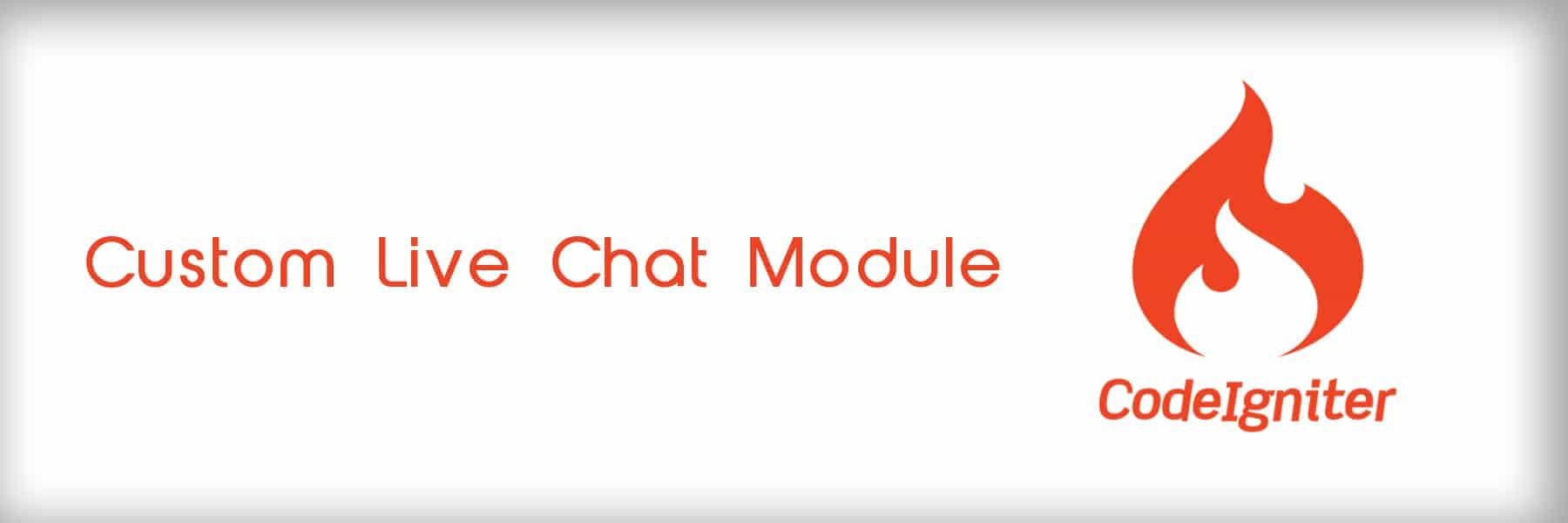
Custom Live Chat Module -CodeIgniter
How does Custom Live Chat Module work?
This is the most important feature that we developed for one of our websites. The Users can search the Experts from the available list and get the guidance that they need via the live chat feature. The Users must pay a certain amount of fees to live chat with the Expert they like. We have integrated PayPal Express payment gateway for the payment functionality.
Users are asked to sign-up first before they can chat with the Expert. At the time of registering on the website, the Users must enter the payment information. Once the sign-up process is completed, the User will be able to select the Expert and can start the chat. Users have to pay per minute charges to chat with an Expert.
User can view complete details about the Expert before the chat. First two minutes of the chat is free. When the User finds the Expert and clicks to chat, a chat page opens, where the time is displayed in 00:00:00 format. When the Expert accepts the offer of the User, the chat process starts along with the timer. There is an interval time of only 1 minute for the Expert to accept the chat invite or the Expert needs to reply to the client’s question within that one minute. After one minute, a pop-up is displayed with the calculations and the chat is disconnected. The User and the Expert also receive notifications respectively. If the Expert does not accept or reject the chat request within two minutes, it goes to the Missed Chat section. The Expert can then contact the User once he is online.
When the User and Expert start the chat, the Admin gets a notification that a chat session has been started with the User and Expert. The amount is deducted from the Users account based on the chat duration and Expert’s rate. During the chat, the Expert cannot change the rate and the status from online to offline. During the chat, if the User’s account balance is about to finish, one minute before, the User and the Expert gets a notification accordingly and the User is offered to top up his account. The User cannot chat further until he adds the money in the account. Once the chat is over the User can view a pop-up to post the review for the Expert. The User and the Expert can view chat history.
Why should you choose Avion?
We have a team of experienced developers who have worked on many PHP- CodeIgniter and Laravel projects. Our team is efficient in handling complex projects through which we can assist you in custom develop any modules required during the development of the website. Please do not hesitate to Contact Us, and you will be able to make your vision a reality and a dream come true.Disclaimer:
Wherever any material is quoted as sourced from the published text with publishing rights vested in an individual, it is stated that it is a genuine quotation and no intention to claim it as our own.
158 adminJanuary 29, 2020

Avion Technology, INC is now Certified Minority-Owned Business!
We are proud to be a part of more than 1100+ such MBEs in the Chicagoland area and hope that our journey thus far helps other minority entrepreneurs in their journey.
700+ projects, 100+ team members, over 10 technologies, four continents. And now a certified MBE. Life keeps getting better.
And now a little plug for Avion Technology:
We provide services in Product Incubation, Digital Transformation, White Labeled Programming, and Digital Marketing. Our technology suite includes- Mobile Technologies (iOS and Android), Web Technologies such as PHP (including Content Management Systems like Joomla, WordPress, and Magento), Java, .NET, Browser Technologies such as JavaScript, Node, Angular and React and Databases (MySQL, Oracle, Postgres, and Mongo).
We are well versed with emerging technologies like AI and Blockchain and also specialize in Amazon Alexa, BLE, AWS, Google Cloud, Internet of Things (IoT) and If This Then That (IFTTT)
We thank you for your continuous business and support for the last 12 years.
Without you, we would not have come this far.
Interested in learning more about Avion Technology, please visit www.aviontechnology.net. Also, please do not hesitate to Contact Us for any new ideas or business requirements and you will be able to make your vision a reality and a dream come true.
148 adminJanuary 29, 2020

Migrating from Magento 1.x to Magento 2.x
Why Upgrade from Magento 1.0 to Magento 2.0?
Magento has stopped the release of any new features in the Magento 1.x versions as of now, excluding the security updates.As per the blog published by Magento, they will stop the official support for the Magento 1.x versions and stop releasing new security updates after June 2020. All the customizations that you will do on your Magento 1.X version will need to be replicated within the Magento 2.X version.
Is it worth migrating?
To remain ahead in the competitive world, you need an eCommerce platform that is both scalable and robust. Magento 2 is the one that has the functionality to provide engaging and seamless buying experiences for the client. And this is often one thing that Magento 2 offers in plenty. It provides you with a secure foundation that also has the scalability and flexibility to let your business succeed.Apart from the scalability and flexibility, there are various advantages of migrating to Magento 2 like more user-friendly checkout, enhanced Security, more responsive on mobile devices, improved customization, more SEO friendly, simplified and smooth product upload, advance reporting, future improvements, and releases.
Why Redevelopment? Planning the migration.
At Avion, we treat the migration process as a platform switch. Magento has changed its architecture completely; the layouts, modules, and extensions their architecture is completely different. They have also introduced a lot of technologies like Knockout.js and Less CSS. There is no easy and quick switch like simply pressing the upgrade button, and it is done . It requires a lot of planning and organizational buy-in.Migrating the website from Magento 1.x to Magento 2.x is as good as developing the website from scratch. The modules need to be re-built, themes are not portable, so we must re-write the themes; the structure of layouts is different, and also the plug-in architecture is different.
During the migration planning process, our Project Managers prepare a thorough plan which has the strategy and the goals laid out clearly with the expected objectives. They make sure that they know the inside out of the project from ground level to the top level. The plan also includes how to re-factor the existing process and improve it to increase the efficiency of the new store. Decide what you need to keep – remove all unwanted extensions which you do not need. Check the stuff you did not implement in Magento 1 and explore the new features available in Magento 2. This helps in providing better customer experience along with the added security.
Understanding the Magento 1 to Magento 2 Migration Process

As far as the migration process is concerned, it can take plenty of time and effort as this process is pretty complex and has a lot of customizations. This is where we (Avion Technology) can assist you as your development partner. The following four steps you need to consider to migrate your website:
- Theme Migration
- Extension Migration
- Customizations Migration
- Data Migration
Theme Migration
You will need to develop a new theme for Magento 2 as direct migration of Magento 1 theme is not feasible. You can hire a team of designers and developers to re-create the current theme, or you can take advantage of this opportunity to re-design the complete store with new and attractive layout.Extension Migration
You cannot use any existing Magento 1.x as they are non-transferrable due to code conflicts. There are many extensions available in the Magento marketplace which are compatible with Magento 2.X. If certain extensions are not available then you can get the extension custom developed.Customizations Migration
Magento provides a Code Migration Toolkit to support you with the code customization process. This process is tricky, and you will need technical knowledge to confirm the custom code is migrated successfully and works efficiently.Data Migration
Magento provides a Data Migration Toolkit to support you with the data migration process. This is the most vital step and requires considerable knowledge of Magento 2 Database Migration. The client information and store data are important for a company. This process is complex as it involves the migration of the existing clients, orders, products, and store settings.Why should you choose Avion?
We have a team of experienced Magento developers who have worked on many Magento projects involving both customizations and migrations. Our team is efficient in handling complex projects through which we can assist you to migrate your existing Magento 1.x store to Magento 2.x successfully. Please do not hesitate to Contact Us, and you will be able to make your vision a reality and a dream come true.Disclaimer:
Wherever any material is quoted as sourced from the published text with publishing rights vested in an individual, it is stated that it is a pure quotation and no intention to claim it as our own.
Resources:
https://trends.builtwith.com/shop/Magento https://devdocs.magento.com/guides/v2.3/migration/migration-overview-how.html https://www.cmarix.com
147 adminJanuary 29, 2020
Get a Quote
Starting a project is just a few steps away...

